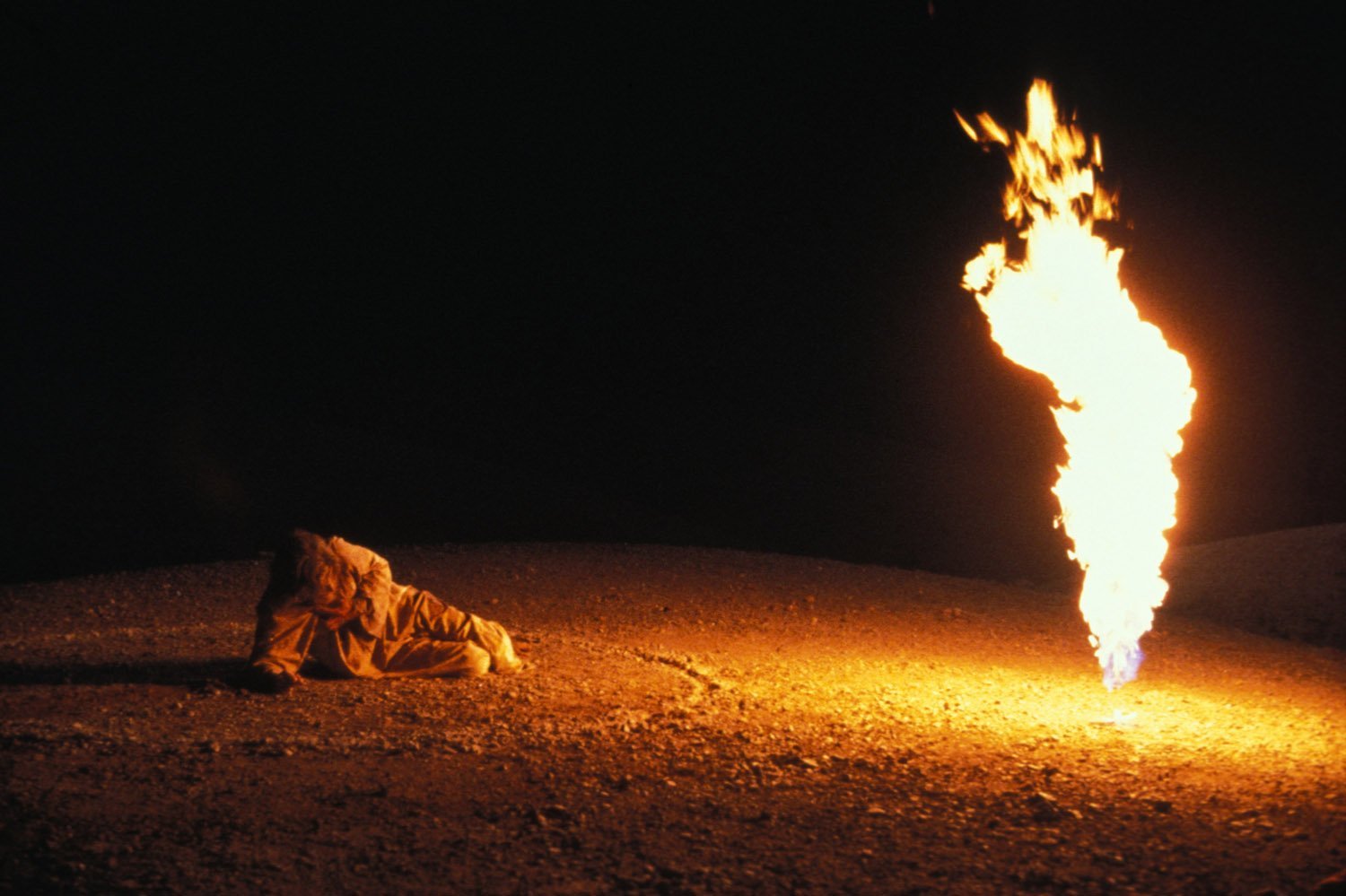
MPAA Rating: R | Rating: ★★½
Release year: 1988
Genre: Drama, Fantasy, Spiritual Director: Martin Scorsese
The Last Temptation of Christ is often unintentionally funny. From exploding snakes, to dramatic stare-downs, to melodramatic soliloquies and speeches, I often found myself giggling at the events happening on-screen, especially in the first half of this nearly-three-hour fantasy film. Having recently watched Rodrigo Garcia’s Last Days in the Desert, I’ve heard more than a few comparisons made between these unique Jesus films, especially in their depiction of the humanity of Christ and using their artistic license with the source material of the Gospel narratives. Scorsese’s film makes it clear up front–this film is not based on the Bible, but rather Nikos Kazantzakis’ novel, described as an exploration of the relationship between human and divine. While Garcia’s film focuses entirely on one episode in the life of Christ, Scorsese’s epic-length film essentially portrays the entire ministry of Jesus up until the crucifixion.
The film’s style and tone feels more like a fantasy than a historic drama or religious biopic. Basically, there’s a lot of weird s**t in this movie. Perhaps the best example of this is the meeting between Jesus (Willem Dafoe) and John the Baptist. Surrounded by swaying naked bodies chanting in rhythm, John hurls out prophetic vitriol with the sweaty fervor of a modern-day televangelist, trading the white Nehru jacket and coifed hair for scraps of dirty leather and stringy locks akin to a homeless metalhead. Jesus approaches with caution–understandably, as this whole scene feels absolutely crazy–and the two converse. Jesus is confused about his identity and vocation, so John recommends a good long visit to the wilderness. “God is the God of the desert” he quips as Jesus heads out to talk with God in the middle of nowhere. Jesus draws a circle in the sand–a perfect circle, because, y’know, he’s the Son of God–and sits down. “I’m not going to leave until you speak to me,” Jesus tells God like an impetuous child demanding a parent purchase him a toy from the store. He’s certainly earnest, but it comes off less pleading and more theatrical. And the theatrics only continue–Jesus is visited by a cobra, a lion, and a talking flame, all manifestations of Satan. Like Last Days in the Desert, Satan has plenty to say to Jesus, while God remains silent.
The above sequence is indicative of the entire film. It is at-once hilariously over-the-top and absolutely fascinating as an zealous theological endeavor. Dafoe’s Christ squirms and anguishes over his vocation as the Messiah, a mosaic of emotions over the course of the film. His best pals are Mary Magdalene (Barbara Hershey) and Judas Iscariot (Harvey Keitel), who both give solid and unique performances in their respective roles. The film’s primary controversy centered on the romantic fantasy sequence between Jesus and Magdalene. Spoiler alert: they have sex. (But it’s okay, because God kills her, and Jesus hooks up with Mary and Martha afterward, and by the way it’s all just a dream, okaybye.)
Keitel’s Judas might be the most interesting character in the bunch as a reluctant betrayer and one of the only true believers in Jesus. Keitel gives Judas a down-to-earth, contemporary voice and posture. When he’s talking with Jesus, the dialogue feels like it could be set in the present day–there’s not a hint of embellishment, which sometimes makes Keitel and the other disciples’ conversations sound anachronistic for a sword-and-sandal fantasy film. Still, Judas is incredibly complex here, and the conversations between him and Jesus are worth exploring as both men try to understand their unique roles in God’s salvation of the world. Ever since reading Dorothy Sayers’ The Man Born to Be King, I’ve found a new respect for Judas and his character. His motives for betraying Jesus are never revealed in the Gospels, which allows for all sorts of interesting interpretations. Was he politically motivated? Was it just the money? Or were there principles and values behind his decision, even spiritual ones? The Last Temptation of Christ has one such complex interpretation, and it’s worthy of recognition.
Controversial and sacrilegious, bombastic and ambitious, The Last Temptation of Christ is neither a masterpiece nor a failure. It is the filmic equivalent of being spiritual-but-not-religious in its strain to appear compelling and important while remaining ultimately quite harmless and shallow in its ideas. It’s certainly out there, but its proposals and questions lack the mystery and intrigue of the actual Gospel of the kingdom of Jesus and its radical, salvific love. I will say this: Last Temptation is a must-see for those wishing to further explore the cinematic Christ and Scorsese’s unique interpretation. Or for those wishing to see a snake explode.
IMDB Listing: http://www.imdb.com/title/tt0095497/